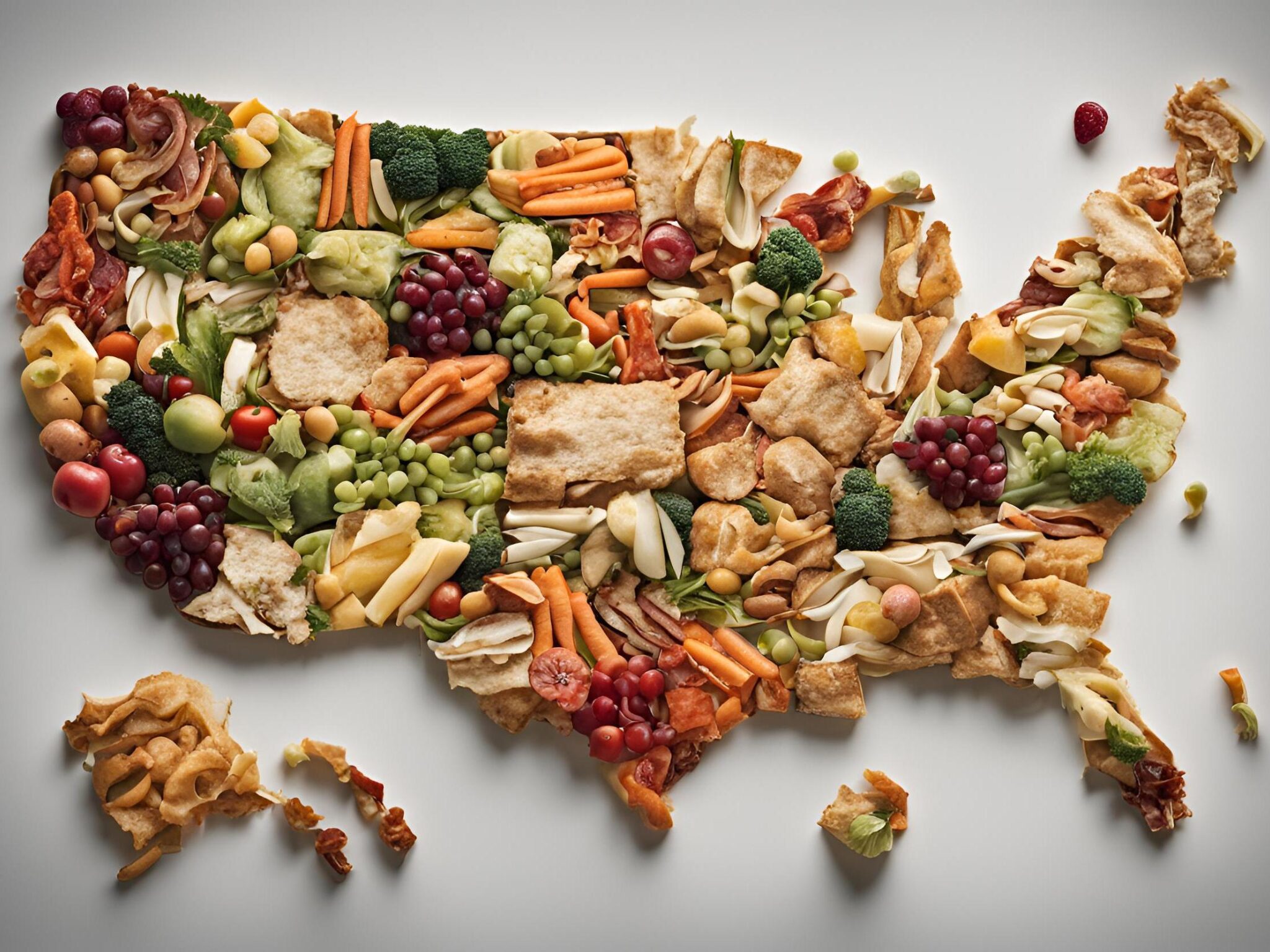US Government Issues First-Ever National Strategy to Combat Food Waste
5 Mins Read
The White House has introduced a national strategy to fight the US’s mounting food waste problem, which includes extending the shelf life of products and upcycling foods into other commodities.
The Biden-Harris administration has released the first national strategy to tackle food waste and loss, as part of the US’s goal of cutting food waste in half by 2030.
Published in alliance with the US Department of Agriculture (USDA), Food and Drug Administration (FDA) and Environmental Protection Agency (EPA) – which renewed their food waste agreement last month – the strategy provides goals for businesses and consumers to prevent wastage, increase recycling, reduce emissions, and save money.
Some of the initiatives revolve around extending the shelf life of foods, expanding food donations, improving local infrastructure to upcycle food waste into useful commodities, and developing a national consumer education and behavioural change campaign.
“Everyone has a role to play in reducing food loss and waste, and I hope that these federal commitments will inspire and catalyze action in the private sector and communities around the US,” said agriculture secretary Tom Vilsack, who announced the food waste strategy at the ReFED Food Waste Solutions Summit in Baltimore, Maryland.
Shelf life, packaging and education in the spotlight

In the US, 38% of all food goes to waste, which is worth $473B, according to ReFED. Much of this food waste is landfilled, responsible for 58% of methane emissions from solid municipal waste landfills. This waste – which is the single largest volume of material sent to landfills and incinerators – also causes emissions equivalent to those of over 50 million gas-powered cars.
The USDA estimates that the average family of four spends $1,500 a year on food that ends up uneaten. But this exacerbates the county’s food insecurity – nearly 13% of households are uncertain or unable to acquire enough food for all members at some point in the year. The amount of food lost or wasted could feed around 46 million Americans – or more than the entire states of New York and Florida combined.
“Each year, food produced in the United States ends up in landfills, instead of on American dinner tables,” said EPA administrator Michael S Regan. “This waste hurts our economy, raises the cost of food, and contributes to climate pollution.”
The objectives of the new national strategy are fourfold: prevent food waste, prevent food loss, increase recycling rates of all organic waste, and support policies that incentivise and encourage these actions.
Some of the priority actions the government and its agencies are taking include a $2.5M investment to measure the “effectiveness of different consumer messages to encourage households to reduce food waste”; a $1.5M research centre for food waste prevention among land-grant universities, their partners and external stakeholders; and collaborations with farmers, crop insurance agents, and gleaning organisations to encourage on-farm food loss reduction.
The White House will also fund research into technologies that could extend the shelf life of perishable foods, such as new seed varieties and novel packaging solutions. The strategy cites “successful efforts in other countries” that have involved changes in packaging design, marketing promotions and portion sizes, and food date labelling. “Consumer confusion about the different quality date labels (e.g., best if used by, sell by, use by) leads to the premature discard of wholesome food,” it reads.
The USDA is further investing in innovations that upcycle food scraps into new products like compost, animal feed or biogas. Moreover, the government is scaling up efforts to help students prevent food waste in schools and cafeterias as well.
US food waste strategy falls short of state and international laws

As part of the strategy, the White House is highlighting the importance of public-private partnerships. Just earlier this month, the USDA, FDA and EPA renewed their MoU with the Food Waste Reduction Alliance (FWRA), which is comprised of the Consumer Brands Association, FMI – The Food Industry Association, and the National Restaurant Association.
The USDA and EPA have also been expanding the US Food Loss and Waste 2030 Champions pledge, which has grown from 30 members in March 2020 to 50 now. These businesses – including giants like Danone, Hilton, Starbucks, Kroger, Walmart, Unilever and Tyson Foods – have replicated the national government’s commitment to cut food waste in half by 2030.
“Public-private partnerships are one key tool delivering results today, but they require support: whether philanthropic, business, or governmental, actors must rally behind programmes addressing the enormous impact wasting food has on food security, our climate, and our wallets,” Harriet Lamb, CEO of food waste charity WRAP, which co-authored the UNEP Food Waste Index 2024 report, said in April.
But the US strategy contains no new regulations to curb food waste, and falls short of food waste laws in other countries, as well as some American states. South Korea, for example, has prohibited food or scraps from going to trash, instead using waste to create compost, biogas and animal feed. France, meanwhile, has a mandatory composting law, and was the first nation to mandate supermarkets to donate food that was still safe to eat.
The latter has been a feature in California too, with the state requiring grocers, restaurants, hotels and hospital cafeterias to donate as much food that would otherwise be disposed of as possible, or face fines. The state also requires all cities and counties to reduce the volume of landfilled organic waste by 75% by 2025 (from a 2014 baseline).
The state of Washington also requires supermarkets to donate safe-to-eat food, while Maryland offers tax credits to farmers who donate edible food. Massachusetts limits how much food can be sent to landfills, while New York requires large businesses to donate excess food and recycle leftover scraps if they’re within 25 miles of a composting facility.
Still, ReFED head Dana Gunders told the New York Times that the new food waste strategy represented “a good first step”.
Globally, nearly a third of all food produced gets wasted or lost, with households alone accounting for 60% of the total. Overall, this amounts to 8-10% of the world’s emissions, and $1T in economic losses.



